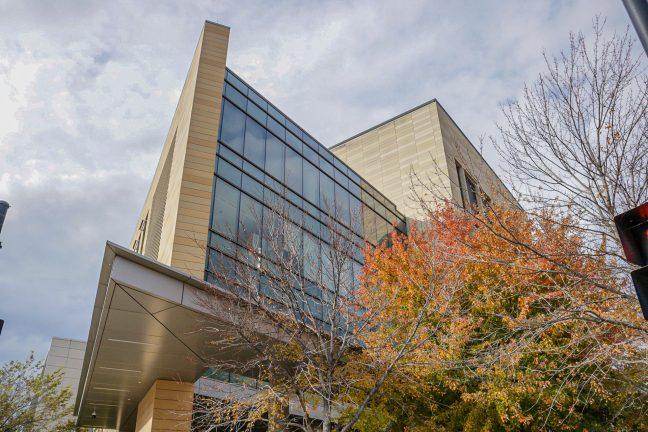The Wisconsin Union Directorate Distinguished Lecture Series held “An Evening With Lyla June: The Power of Indigenous Knowledge in an Age of Neocolonialism” in the Discovery Building Monday.
The lecture and discussion began with an acknowledgment that the University of Wisconsin occupies stolen Ho-Chunk land. Spokesperson for the Distinguished Lecture Series committee, Genna Alexander said this history of colonization informs a shared future of collaboration and innovation.
Senior Academic Librarian-Emerita and Ho-Chunk nation member Janice Rice introduced Lyla June. Rice described her as a musician, scholar and community organizer.
June then introduced herself in a traditional manner, speaking the language Diné Bizaad.
“My name is Lyla June,” June said. “I am from the Tsétsêhéstâhese clan of the Diné Nation. We are also incorrectly known as Navajo. We call ourselves Diné, which means ‘the people,’ and we have relatives all the way up in Alaska. If you go to California, they speak Diné Bizaad too. So, we’re a very big nation, and we took care of a lot of lands – we still do to the best of our ability.”
Until about six years ago, June was miseducated about what happened on this continent before Columbus, she said. Her research works to rewrite — or correct — the narrative about how vast and sophisticated Indigenous land management was.
Chancellor Jennifer Mnookin shares opinions, approaches to key student issues
June began by describing the American chestnut tree, which is almost completely extinct. Nearly 3,000 years ago in Kentucky, however, the chestnut tree saw a massive influx. The reason for this, June said, is that Shawnee ancestors – the indigenous people of Kentucky – managed the forest with routine fire.
Fires eliminated competing vegetation from taking over chestnut trees, turned all the dead grasses in the fall into nutrient-dense ash and created forage, June said.
“We’ve been conditioned to be scared of fire, and so it’s kind of scary,” June said. “But when you don’t do fire, you get massive fires. And so the fires we’re seeing in the U.S. and Australia and other parts of the world are not simply due to [the] climate crisis. They’re also due to the prohibition of Indigenous fires, which has led to a huge fuel buildup over the centuries.”
June explained another Indigenous practice in desert areas, which involves planting fields at the base of a small watershed. This practice, known as runoff agriculture, brings nutrients and fertilizers from upland soil.
Studies showed that these infield areas had higher nitrogen phosphorus soil organic matter content than surrounding areas, according to June.
“You want to dovetail what nature is already doing,” June said. “You want to go where the mother is already flowing. You don’t need to pipe water out somewhere else. You don’t need to force her to be yours, but rather, why don’t you try to be hers instead.”
June said her ultimate hope is to reframe the narrative most people know. For example Turtle Island – North and Central America – was a densely populated and extensively managed continent, not just a “few half-naked nomads … eking out living on the land.”
The current untrue narrative erases thousands of years of heritage, June said.
“In addition to that, it robs society as a whole of the lessons that are embedded in these systems,” June said. “The lessons that we can learn today to solve our most pressing challenges — catastrophic fire, catastrophic flooding, the climate crisis, soil erosion — all of these things could be healed through Indigenous management techniques.”













